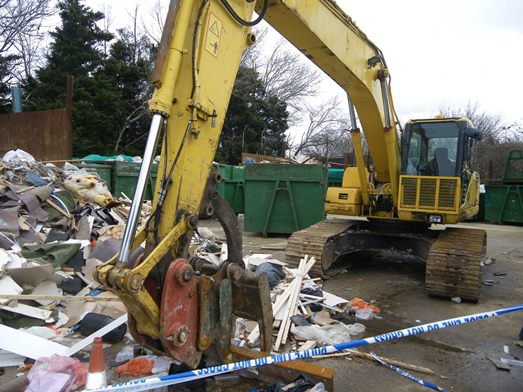Basildon Crown Court heard how on 7 February 2014 the worker was processing wood waste at a site operated by Cohart Asbestos Disposal Ltd at Archers Field in Basildon.
“Every year many people are killed or seriously injured in incidents involving workplace transport, and there is no excuse for employers to neglect this risk – HSE
A company director was operating a 360o tracked excavator, which he was using to transfer waste from a main pile to an adjacent manual-sorting area. The injured worker moved behind the excavator to pick up an old door and place it in a skip. As he did so, the operator reversed the plant, crushing the worker beneath one of the tracks. He sustained serious crush injuries to his right leg which later required amputation in hospital.
A Health and Safety Executive (HSE) investigation found that the company had failed to ensure effective communications between the operator of the excavator and persons working in the yard.
A visibility assessment on the excavator also revealed that the operator would have been affected by a ‘blind spot’ of up to eight metres directly behind the vehicle. Further, the excavator’s reversing alarm and beacon were not working, a mirror was missing from the side of the cab and there was no camera or mirror on the rear of the vehicle.
Cohart Asbestos Disposal Ltd, of 31 Grange Court, Upper Park, Loughton, Essex, was fined £40,000 and ordered to pay costs of £5,674 after pleading guilty to breaching Section 2(1) of the Health and Safety at Work etc. Act 1974.
After the case, HSE Inspector Edward Crick, said: “Potentially fatal risks arise from operating heavy plant on waste sites, particularly if, as in this case, the vehicle operator’s visibility is restricted.
“This worker suffered life-changing injuries after the company failed to put in place effective measures to protect pedestrian workers from its heavy plant operations.
“Every year many people are killed or seriously injured in incidents involving workplace transport, and there is no excuse for employers to neglect this risk. Pedestrians, whether employees or others, should be kept separate from workplace vehicle movements by using physical barriers or safe systems of work that are clear and well supervised.”


